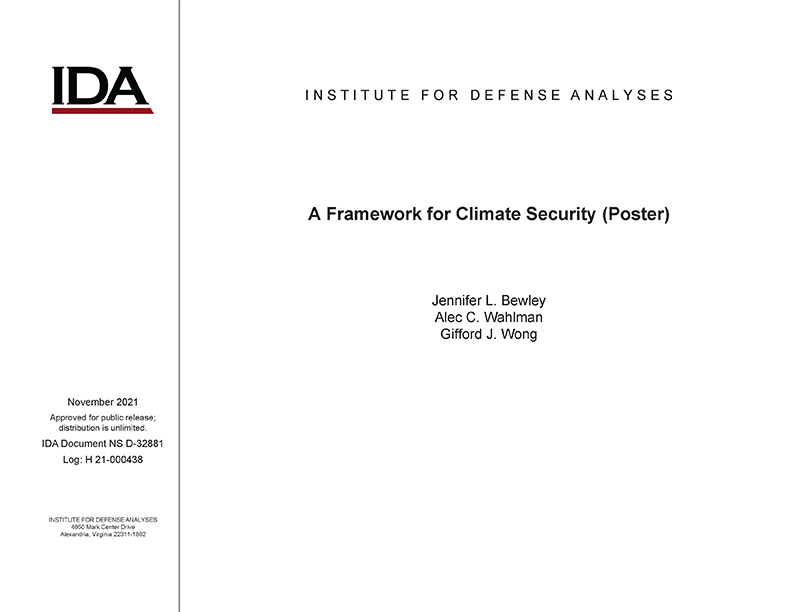A Framework for Climate Security (Poster)
November, 2021
IDA document: D-32881
FFRDC: Systems and Analyses Center
Type: Documents,
Energy-Environment
Division: Science and Technology Division,
Science, Systems and Sustainment Division
Authors:
IDA document: D-32881
FFRDC: Systems and Analyses Center
Type: Documents
Division: Science and Technology Division
Authors:
Authors
Jennifer L. Bewley, Alec C. Wahlman, Gifford J. Wong
See more authors

